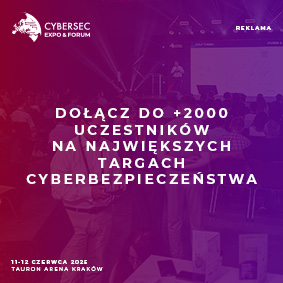Pet Dental USA Brings Advanced 3D-Like Dental Imaging to Norman Pets with Tomosynthesis Technology
Pet Dental USA has introduced cutting-edge dental tomosynthesis technology at their Norman, Oklahoma, clinic.
NORMAN, OK, UNITED STATES, May 19, 2025 /EINPresswire.com/ -- Pet Dental USA has introduced cutting-edge dental tomosynthesis technology at its Norman, Oklahoma, clinic. Available since March 2025, this advanced imaging service significantly enhances diagnostic capabilities.Pet dental health is a cornerstone of overall wellness, yet issues often go undetected. Alarmingly, up to 80% of dogs and 70% of cats show signs of dental problems by age two. Many severe conditions develop below the gumline, invisible to the naked eye and challenging to diagnose fully with traditional 2D dental X-rays, highlighting the need for advanced diagnostic tools.
Unlike standard flat dental X-rays, pet dental tomosynthesis is a digital imaging modality that works by capturing multiple low-dose 2D X-ray images from different positions around the pet's head. A powerful software then reconstructs these images into a 3D overview, allowing for a series of images that can be viewed as a stack. This enables the veterinary dental team to see different features of the dental structures at different depths, eliminating the visual clutter caused by overlapping structures common in conventional 2D radiography.
This technology is designed and used for veterinary dental applications, offering a clearer perspective on animal oral anatomy. The images take about 20 seconds to obtain, and only one or two scans need to be done per patient, greatly reducing the time required to get high-quality images and reducing the time the pet is under anesthesia.
Dr. Becca White, Owner of Pet Dental USA Oklahoma, explains, "Our Adaptix 3D imaging system has revolutionized our patient care. Since its introduction, we've identified pathology undetectable with our conventional X-ray. Its portability allows us to scan patients directly on the dental table, eliminating transfers and accelerating image acquisition. This significantly reduces anesthesia time and enhances patient safety. The system's precise anatomical imaging also allows for more efficient treatment planning. Consequently, 3D imaging is now a standard component of all our dental procedures."
Introducing pet dental tomosynthesis at the Pet Dental USA Norman location empowers veterinarians to identify better and address:
- Subtle or hidden tooth root fractures.
- Early or localized periodontal bone loss.
- Complicated root canal issues and endodontic disease.
- Feline tooth resorption lesions, especially in early stages.
- Impacted or unerupted teeth.
- Potential issues near the jawbone or nerve canals.
- Occlusion issues (problems with how teeth are lined up).
- Conditions affecting jaw joints or other parts of the skull not visible with traditional images.
Tomosynthesis enables a more accurate diagnosis of dental disease by providing a much more detailed view around each tooth structure. It helps create a more appropriate treatment plan for each patient. This technology allows Pet Dental USA to obtain advanced imaging while reducing the time pets spend under anesthesia, offering a benefit similar to a CT scan in terms of detail, yet at a more obtainable cost for clients.
Pet Dental USA Oklahoma received its tomosynthesis unit in March 2025, and it is now incorporated into every dental procedure booked at the facility.
About Pet Dental USA:
Pet Dental USA is dedicated exclusively to pets' oral health. Its clinics focus on veterinary dentistry and oral surgery, offering comprehensive services from routine cleanings to advanced treatments for a healthy mouth.
Pet Dental USA - Norman Clinic
Pet Dental USA
+1 (405) 310-4956
petdentalusa|gmail.com| |petdentalusa|gmail.com
Legal Disclaimer:
EIN Presswire provides this news content "as is" without warranty of any kind. We do not accept any responsibility or liability for the accuracy, content, images, videos, licenses, completeness, legality, or reliability of the information contained in this article. If you have any complaints or copyright issues related to this article, kindly contact the author above.
Kenneth E. Musgrove’s An American Story with Many Twists and Turns-That’s Life
Happiness Management Institute Launches On-Demand Platform to Redefine Executive Education in the Well-Being Economy
Geiger Counters Market to Reach USD 181 Mn by 2035 at 7.2% CAGR, Amid Radiation Safety Push and Nuclear Investments
Kalendarium
Więcej ważnych informacji
 Jedynka Newserii
Jedynka Newserii

 Jedynka Newserii
Jedynka Newserii

Handel

Ważą się losy nowej umowy między Unią Europejską a Ukrainą na temat zasad handlu. Obecne przepisy wygasają 5 czerwca
5 czerwca wygasa ATM, czyli wprowadzona przed trzema laty i potem z modyfikacjami przedłużana umowa między UE a Ukrainą, liberalizująca zasady wwozu ukraińskich towarów na teren Wspólnoty. Strona ukraińska chciałaby jej przedłużenia, na razie jednak Unia zgodziła się jedynie na przedłużenie bezcłowego przywozu żelaza i stali. Największe obawy, zwłaszcza w Polsce, budzi kwestia produktów rolnych. Zdaniem europosłanki Konfederacji Anny Bryłki należałoby wrócić do obowiązującej przed 2022 rokiem umowy stowarzyszeniowej DCFTA, ponieważ Ukraina może dziś eksportować swoje towary drogą morską poprzez porty na Morzu Czarnym, a dzięki darmowemu dostępowi do unijnego rynku bogacą się jedynie potentaci rolni.
Ochrona środowiska
Nowe technologie pomagają szybciej i dokładniej sortować odpady. Wciąż nie wszystkie da się jednak przetworzyć

Do 2030 roku 55 proc. odpadów opakowaniowych z tworzyw sztucznych powinno trafiać do przetworzenia. W ubiegłym roku było to ok. 27 proc. Nowe technologie w coraz większym stopniu ułatwiają sortowanie odpadów, ale nie pozwalają jeszcze na przetworzenie wszystkich ich rodzajów. To pierwsze wyzwanie związane z zamykaniem obiegu. Kolejnym jest zwiększanie zawartości materiałów pochodzących z recyklingu w produkowanych opakowaniach, czego wymagają unijne przepisy. Choć w tym obszarze widać w ostatnich latach znaczące postępy, nie brakuje wyzwań.
Handel
Rosyjskie surowce przestaną płynąć do UE. Spóźniony, ale ambitny i istotny plan ma być wdrożony do 2027 roku

– Kupowanie surowców energetycznych z Rosji jest jak kupowanie broni przeciwko Ukrainie – uważa europosłanka PO Mirosława Nykiel. Dlatego KE planuje do 2027 roku ograniczyć do zera import rosyjskich paliw. Joanna Scheuring-Wielgus ocenia, że taka decyzja powinna zapaść już dawno, ale lepiej późno niż wcale. Co więcej, państwa członkowskie powinny być w tych deklaracjach zjednoczone najbardziej, jak się da.
Partner serwisu
Szkolenia

Akademia Newserii
Akademia Newserii to projekt, w ramach którego najlepsi polscy dziennikarze biznesowi, giełdowi oraz lifestylowi, a także szkoleniowcy z wieloletnim doświadczeniem dzielą się swoją wiedzą nt. pracy z mediami.










.gif)

 |
| |
| |
|